Case Study
Introduction:
A 66 year old male patient who is a paraplegic for many years admitted with a pressure sore to the left hip. Initially ungradeable.
This man had a flap reconstruction to the area many years previously. Following an injury and subsequent pressure, he developed the pressure sore to the left hip. This was being cared for in the community for approximately 1 year and was admitted to hospital when further deterioration set in and the dressings were not showing any improvement. He was initially commenced on VAC on admission to hospital.
The patient was brought to theatre for debridement and flap reconstruction.
Two weeks post-operatively, the wound began to break down again at the corner of the flap. VAC was commenced.
Unfortunately, the pressure sore redeveloped despite VAC, OT involvement with pressure relieving mattresses and optimisation of the patient’s nutrition.
Scans showed no osteomyelitis.
Methods:
Following further wound breakdown, it was decided that the wound required further debridement. VAC Veraflo with saline infiltration was employed to debride the wound.
Following successful wound debridement with Veraflo, granulation was now also required to progress towards wound healing.
Cleanse Choice Foam was incorporated in the Veraflo regime and subsequent results show ongoing improvement in wound bed health and granulation progression.
Some sharp debridement was used at some intervals to assist the debridement process.
Results:
Investigated for osteomyelitis and negative for same.
No tissue infection.
Discussion:
This wound quickly progressed to a grade 3 -4 pressure ulcer in a short space of time following flap reconstruction surgery. OT involvement and all measures to optimise the patient medically and nutritionally were introduced as were pressure relieving measures such as mattresses and no lying on the side of the pressure ulcer.
The introduction of VAC Veraflo began the debridement process and the subsequent addition of the Cleanse Choice Foam allowed optimisation of the wound bed providing a local wound bed environment conducive to healing allowing all measures taken to optimise the patient as a whole come together.
The continuous debridement of devitalised tissue aided the prevention of tissue infection and the Negative pressure coupled with the Cleanse Choice Foam allowed for continuous granulation of the clean wound bed underneath.
Once the wound granulated to the surface, the patient was returned to regular VAC and was optimally managed medically until full wound closure was ultimately achieved.
Conclusion:
Pressure sores can be a life threatening situation for patients. In many cases, those who develop pressure sores are also patients who may not be medically suitable for general anaesthetic or surgical intervention. The risk of developing osteomyelitis is high as is the risk of developing life threatening infections. In these cases, a host of interventions are usually required in order to optimise the patient from every aspect to be able to achieve healing in the wound bed. This often requires input from many medical sources in the hospital such as the primary medical team, Plastic Surgery, Infectious Diseases, Tissue Viability, Occupational Therapy, Dieticians and more.
The employment of interventions that can achieve both debridement and granulation at the wound bed are a huge part of the process as we must optimise the wound bed to prepare for and encourage healing as we optimise and prepare the patient to heal. Although all these interventions can still take time, this patient had tried the surgery option without success so this provided the opportunity to heal without further surgical intervention. The patient, now healed, returns home and we can see the benefit of the use of VAC veraflo in such patients where our bacterial load is managed effectively to avoid infection and healthy granulation can be promoted.
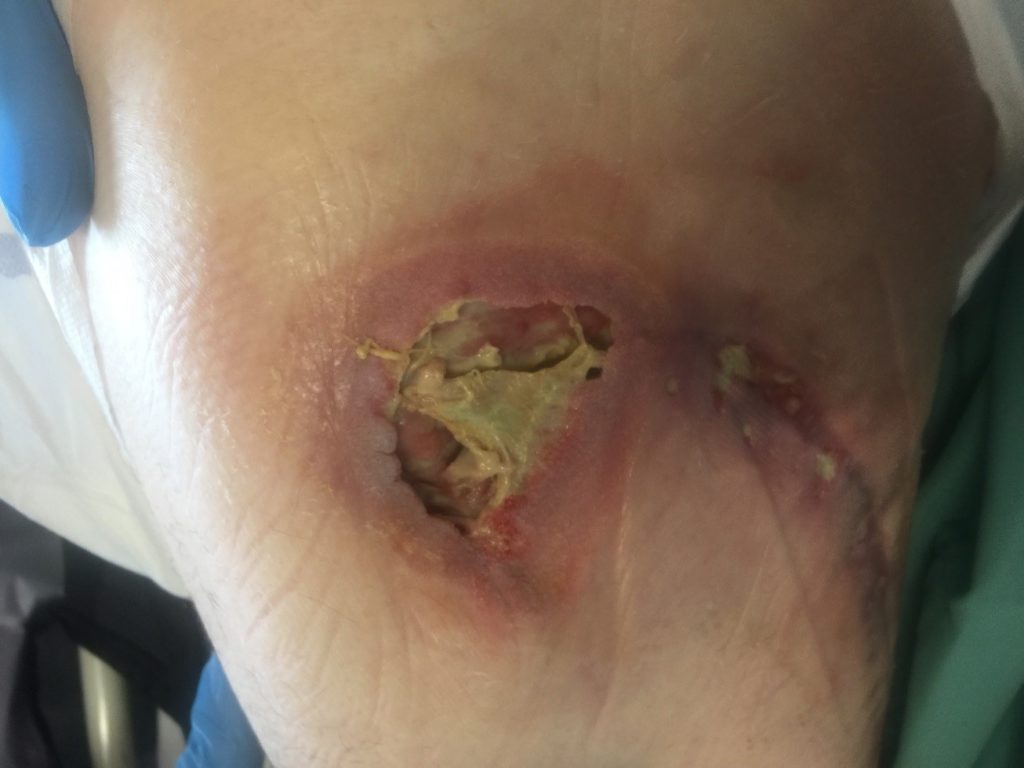
Cavity wound under the sloughy film of devitalised tissue across wound. Evidence of possible tracking to further down previous flap scar site
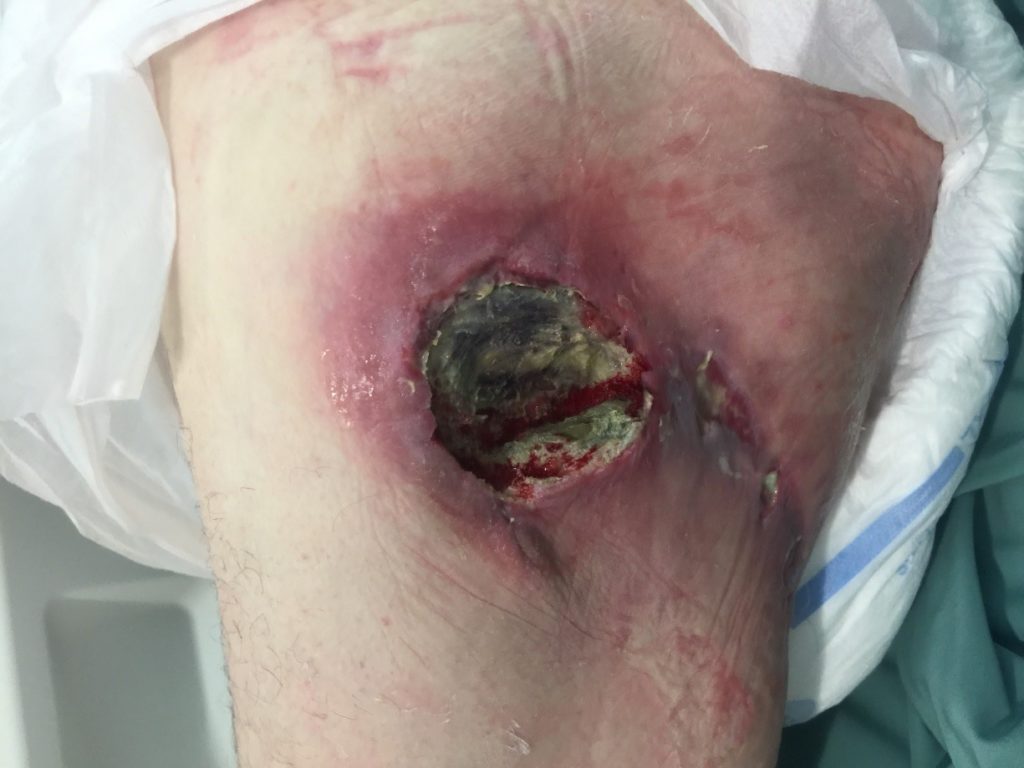
Cavity wound declared. Good blood supply to wound bed.
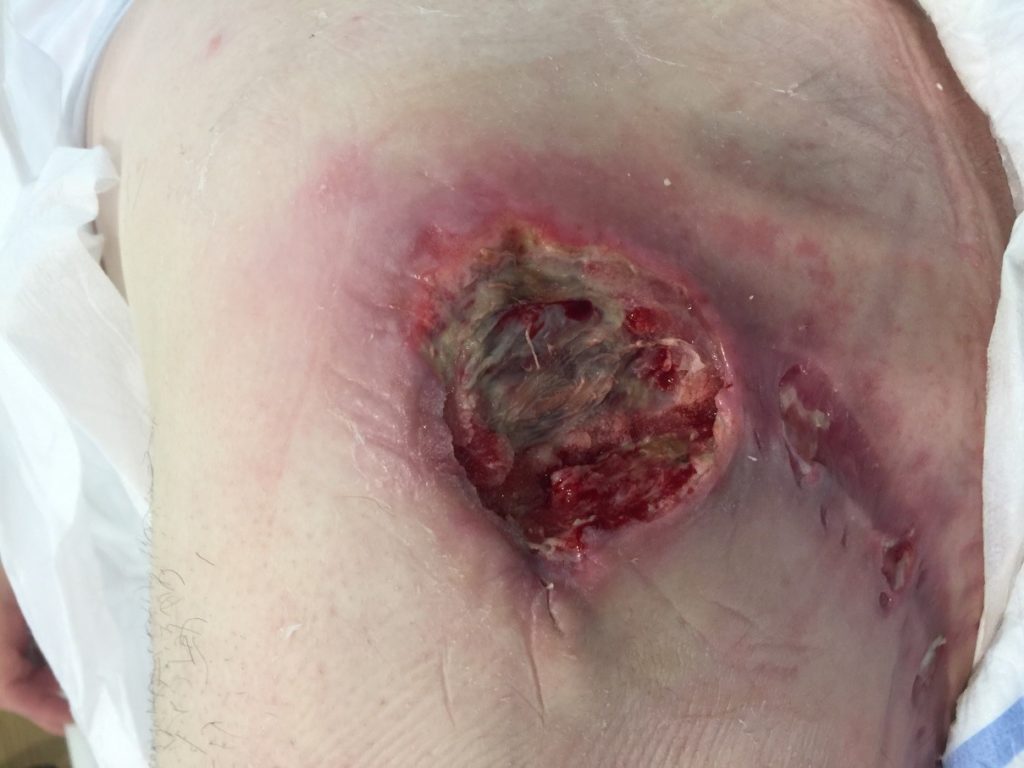
Cleaner wound bed. Periwound improved. Cavity depth improvement
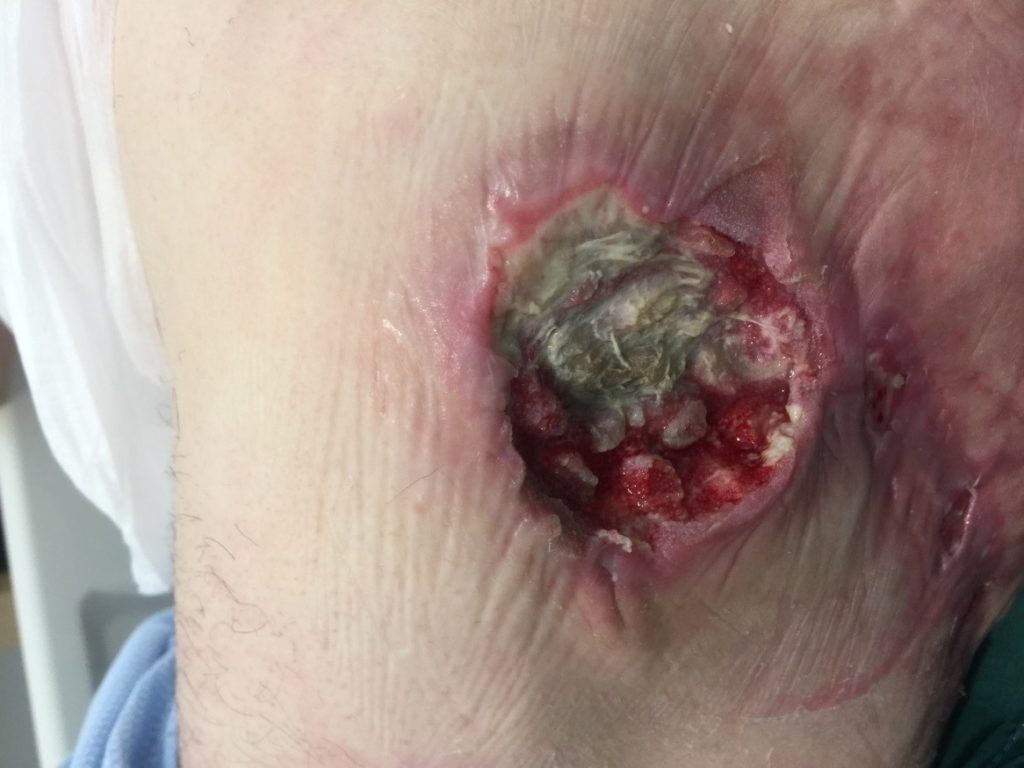
Good periwound condition. No communication between wound and now superficial ulcerations on previous flap scar site. Some declaration of sloughy tissue at 11 o clock.
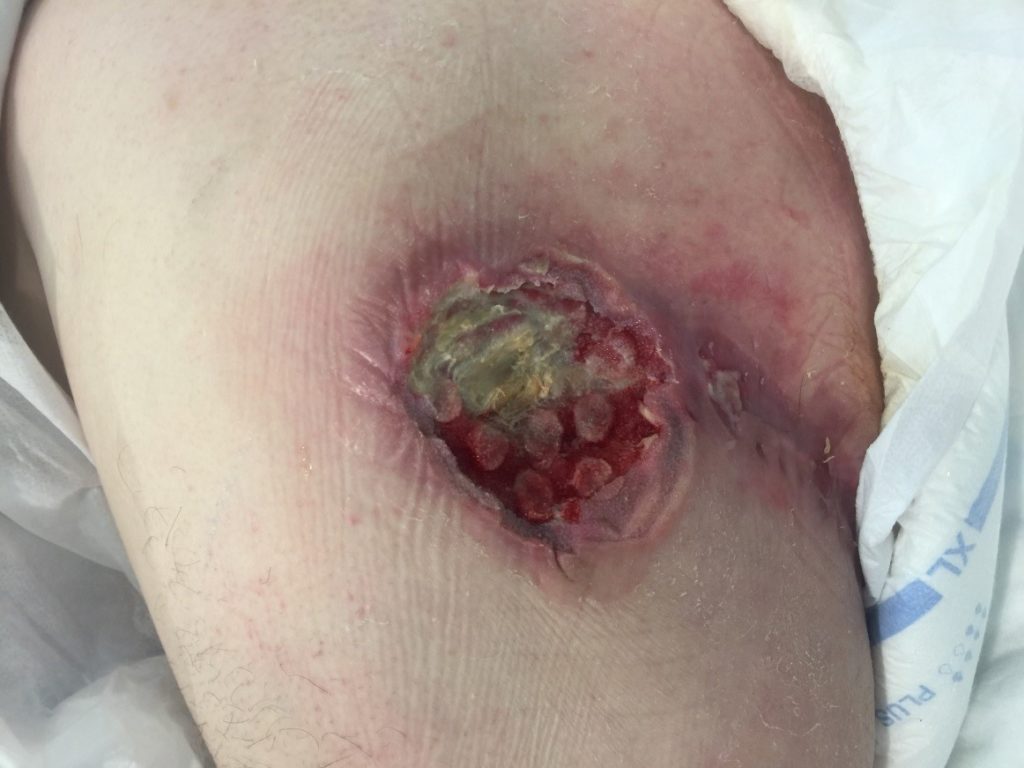
Some improvement to sloughy tissue at 11 o clock.
Cavity depth vastly improved
Wound size decreasing
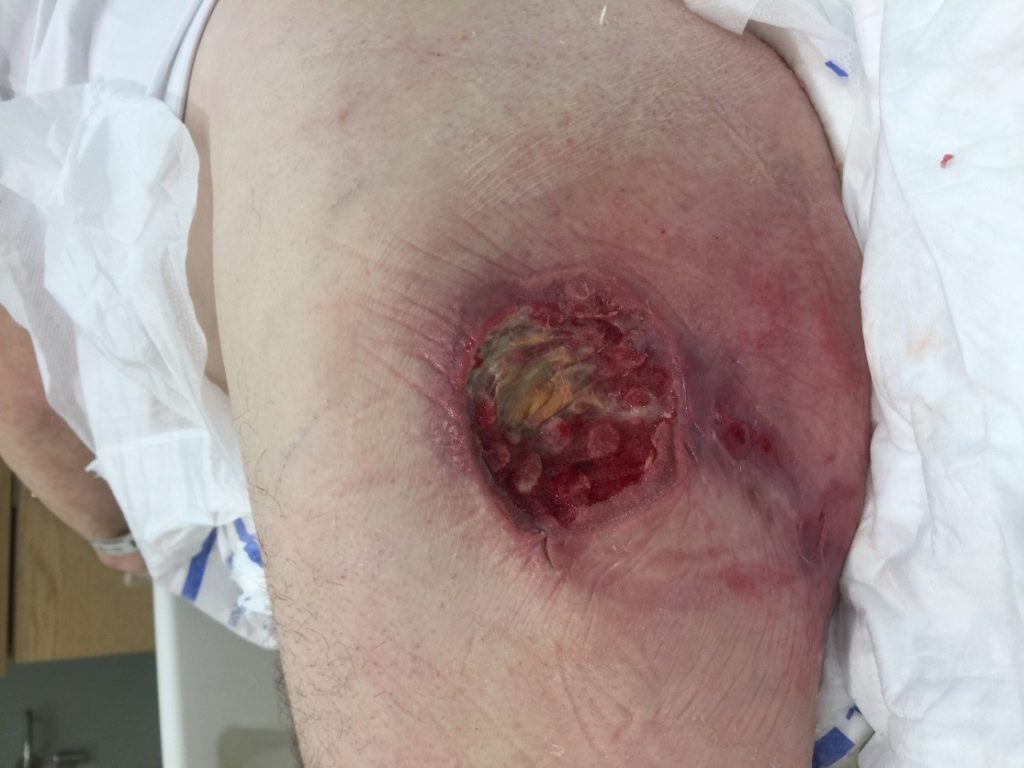
Slough much decreased. Clean granulating wound bed.
Evidence of wound closure at periwound.
Superficial ulceration at previous scar site benefitting as almost healed.
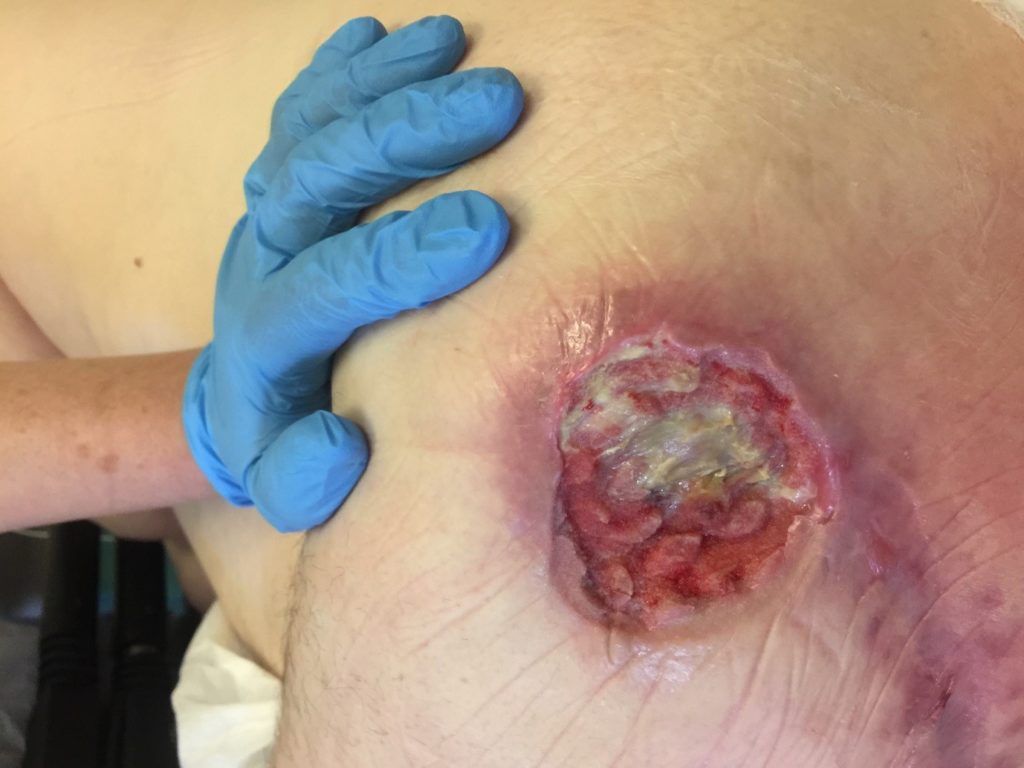
Cavity has filled.
Slough present but easily removed
Wound circumference largely reduced
Periwound superficial ulceration resolved